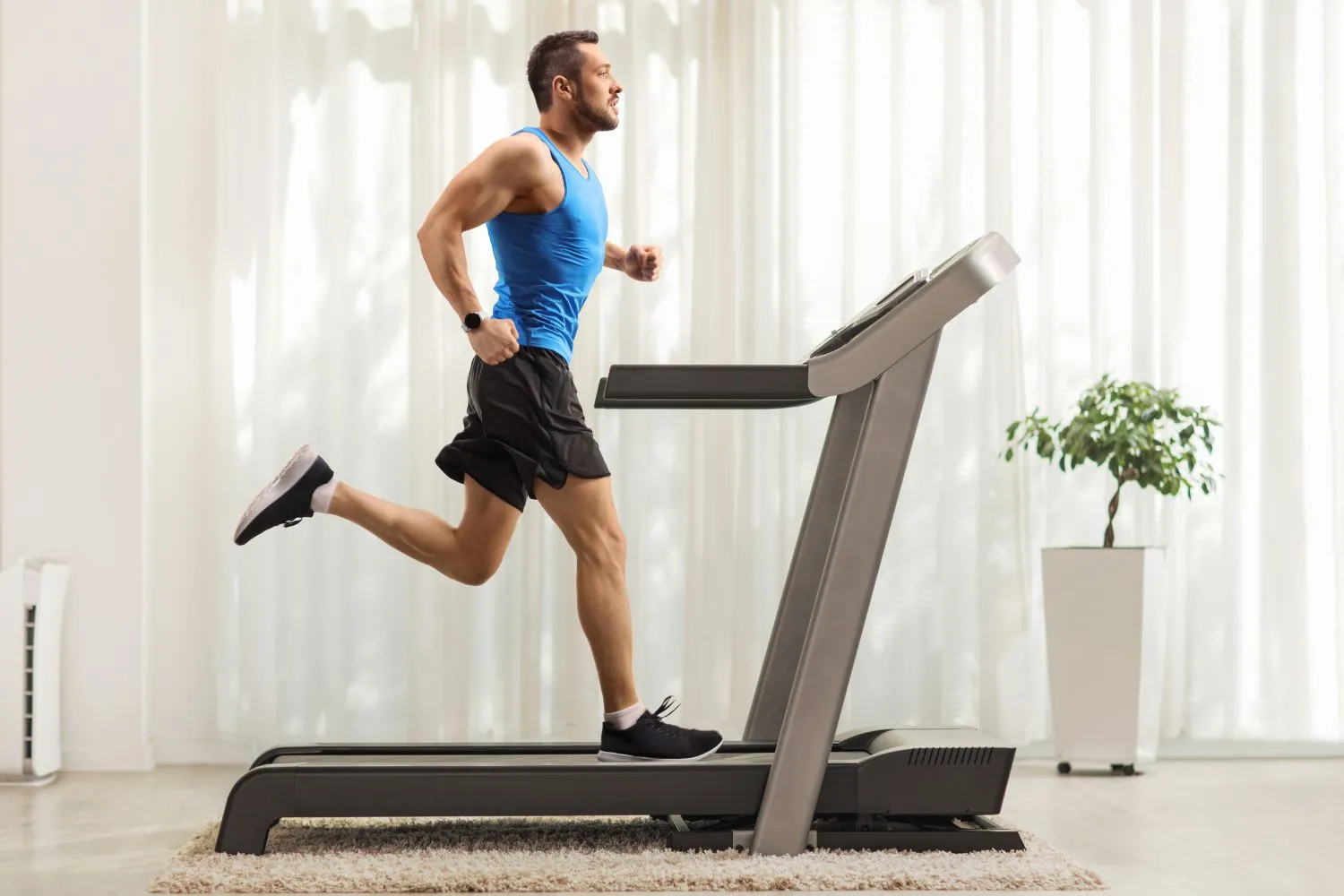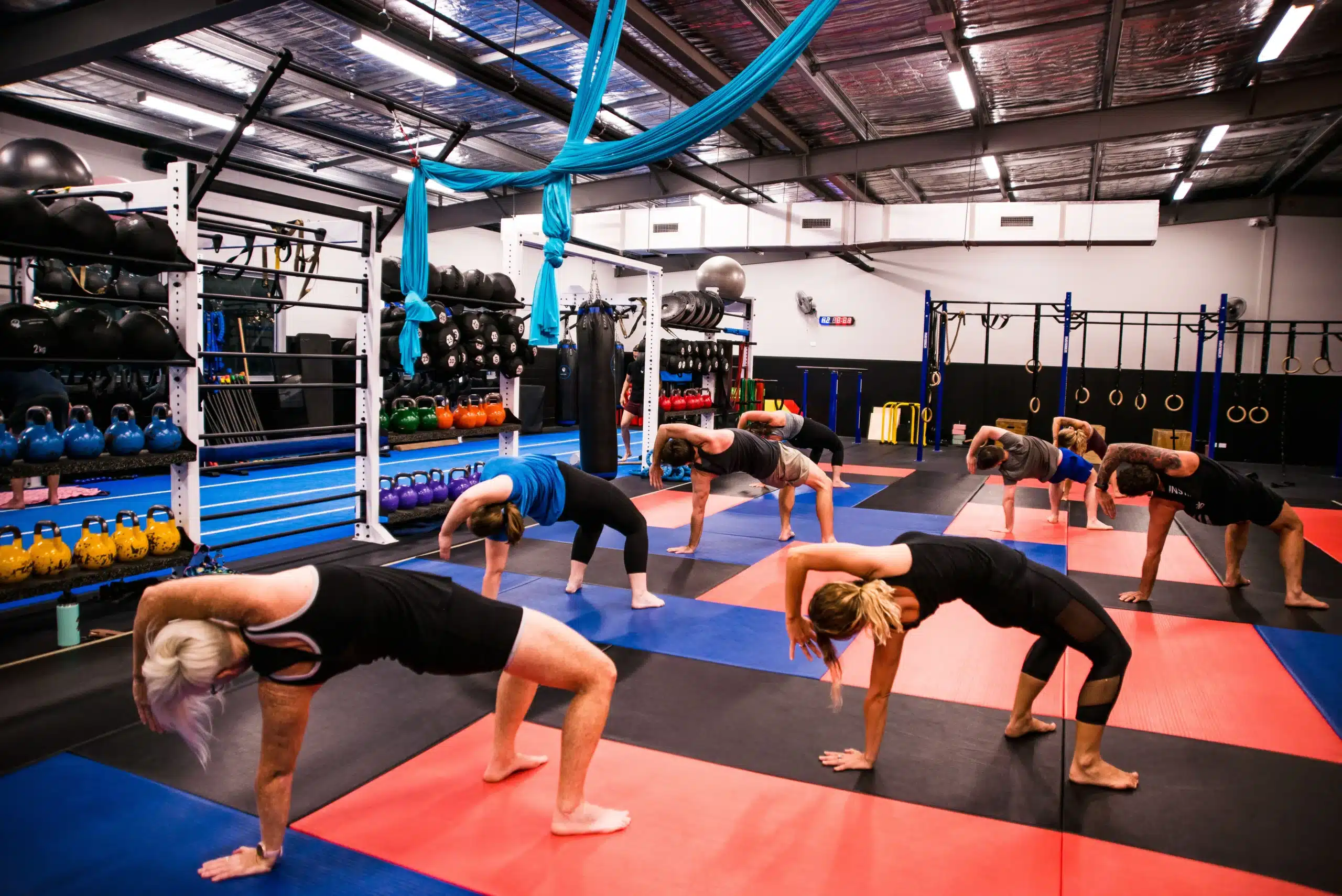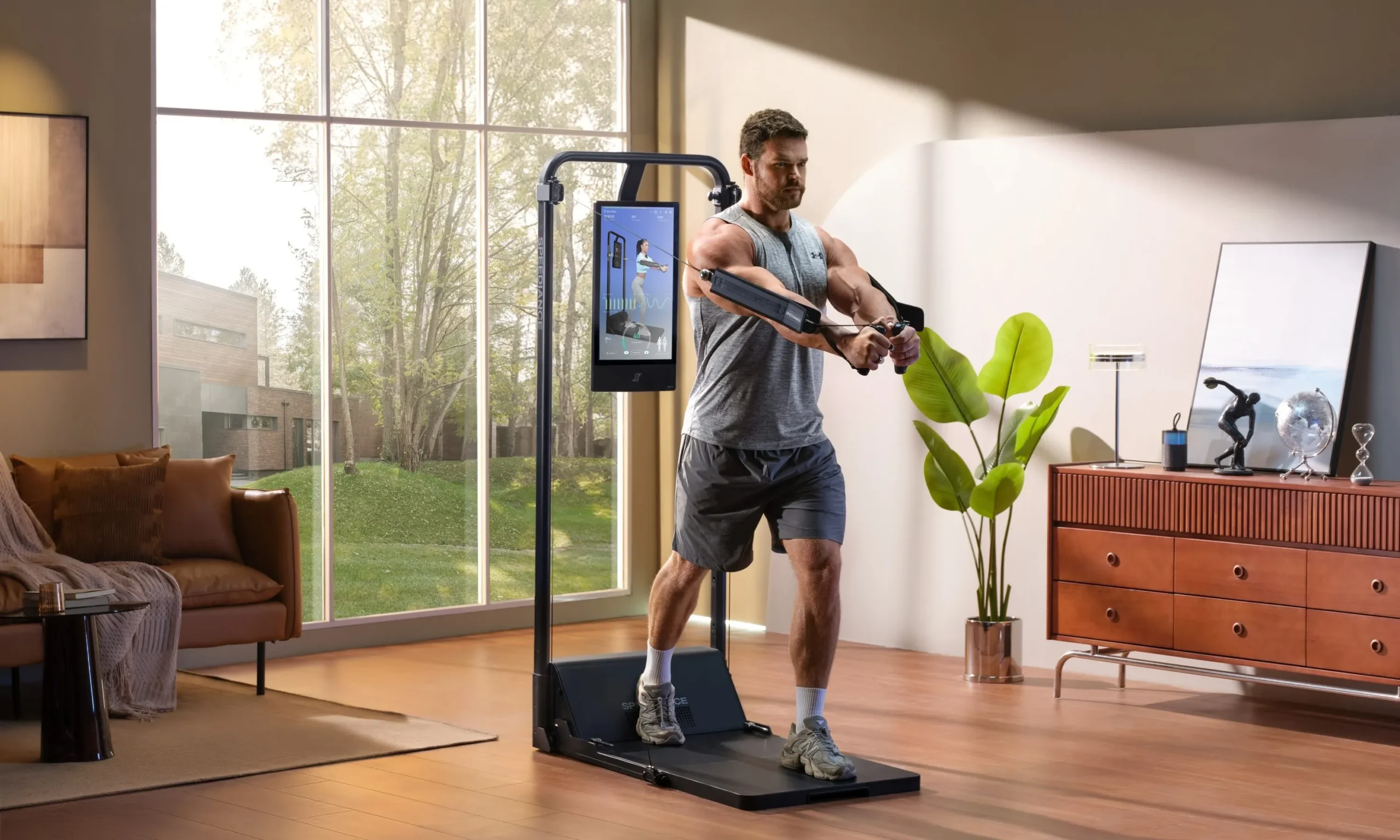Hey there, if you’re anything like me, you’ve probably chased that feeling of flying across the field or the court—pure, unfiltered speed that makes you untouchable. I remember my first pickup basketball game after a long winter of just grinding heavy lifts. I was strong, sure, but when it came to dodging a defender or exploding off the line, I felt like a truck trying to moonwalk. It hit me: strength is great, but without speed, you’re just a statue with muscles. That’s when I dove headfirst into speed training in the gym, blending sprints, jumps, and smart lifts that turned me from plodding to popping. If you’re ready to unlock that explosive edge, stick with me. We’ll cover everything from the basics to battle-tested workouts, all doable right in your gym space. Let’s get you moving like the wind.
What Is Speed Training, and Why Does It Matter in the Gym?
Speed training isn’t just about running fast—it’s about teaching your body to generate force quickly and efficiently, whether you’re sprinting down a track or changing direction mid-play. Think of it as upgrading your neuromuscular software: faster signals from brain to muscle mean quicker reactions and more power in every stride.
In the gym, this translates to exercises that build explosive strength, agility, and that raw burst you need for sports or just feeling athletic in daily life. For me, incorporating speed work shaved seconds off my 40-yard dash and made everyday tasks like chasing my dog feel effortless. It’s not reserved for elite athletes; anyone can benefit, reducing injury risk and boosting confidence.
The beauty? You don’t need a fancy track—just some space, basic gear, and consistency. Over time, you’ll notice better coordination, stronger fast-twitch fibers, and that addictive rush of outpacing your old self.
The Science Behind Building Speed: Strength Meets Explosion
At its core, speed boils down to physics: force applied over time. Your muscles need to contract rapidly to propel you forward, which is why gym-based speed training focuses on power—the sweet spot between heavy strength and quick movement.
Research shows plyometrics and Olympic lifts like cleans spike your rate of force development, making you quicker off the mark. I once experimented with a four-week block of these after a plateau in my soccer tryouts; my acceleration felt like I had a jetpack. It’s all about recruiting those fast-twitch fibers without bulking up too much.
Don’t overlook recovery—your nervous system needs rest to adapt. Pair this with solid nutrition, and you’re not just faster; you’re resilient, ready to dominate whatever comes your way.
Understanding Fast-Twitch Fibers
Fast-twitch fibers are the sprinters of your muscle world, firing up for short, intense efforts like a quick cut or a max-effort sprint. Training them in the gym amps up their recruitment, turning sluggish starts into lightning launches.
These guys thrive on high-intensity, low-rep work, so think box jumps over endless cardio. In my early days, ignoring them left me gassed after one burst; now, they’re my secret weapon for sustaining speed.
Role of Plyometrics in Speed Development
Plyometrics bridge strength and speed by training the stretch-shortening cycle—your muscles loading like a spring before exploding. Drills like depth jumps build that elastic rebound, crucial for real-world agility.
Start light to avoid tweaks; I learned that the hard way with a sore Achilles from overzealous bounds. Done right, they elevate your vertical and horizontal power, making gym sessions feel like play.
Essential Exercises for Explosive Speed
No fluff here—these are the moves that deliver. Focus on quality over quantity: explosive reps with full recovery keep your form sharp and gains rolling.
From sprints on a treadmill to weighted jumps, mix them into your routine two to three times a week. I’ve seen buddies transform from average Joes to gym legends just by nailing these consistently.
Sprint Variations for Acceleration
Short bursts mimic game speed, building that 0-10 mph kick. Try 10-20 yard dashes from a dead start, emphasizing drive phase—knees high, arms pumping like pistons.
In the gym, use a hallway or turf area; add resistance bands for extra bite. My go-to: five sets of 15-yarders with two-minute rests. It’s brutal but builds that “unblockable” first step.
Plyometric Jumps to Boost Power
Jumps teach your legs to snap back like rubber bands. Box jumps or broad jumps target glutes and quads, firing up triple extension for max propulsion.
Aim for 3-5 sets of 5-8 reps, landing soft to protect joints. I love single-leg variations—they fixed my imbalance from years of uneven training and added real pop to my strides.
Agility Ladder Drills for Quick Feet
Ladders sharpen foot speed and coordination, turning clunky steps into a blur. High-knee runs or lateral shuffles through the rungs improve change-of-direction quickness.
Do patterns like in-and-outs for 20-30 seconds, resting a minute. They’re deceptively tough—my first session left me huffing, but weeks later, I was weaving through cones like a pro.
Strength Training Tweaks for Maximum Velocity
Lifts aren’t just for size; done explosively, they crank up your speed engine. Ditch slow grinds for dynamic sets that mimic sprint mechanics.
Heavy compounds like squats build the base, but pair them with speed work for transfer. I shifted from bodybuilding reps to power-focused ones, and my track times dropped like a stone.
Olympic Lifts: Cleans and Snatches
These full-body pulls explode hip drive, directly feeding into sprint power. Hang cleans, for instance, teach triple extension—hips, knees, ankles firing in sync.
Keep loads at 60-70% max for speed; 3-4 sets of 3. Technique is king—botch it, and you’re sidelined. My coach drilled this; now it’s my warmup staple.
Lower Body Power Builders
Squats and deadlifts fortify your engine room. Front squats hit quads for acceleration, while Romanian deads strengthen hamstrings against pulls.
Go heavy but explosive: 4-6 reps at 80% effort. I added trap bar deads for variety—safer on the back, killer for posterior chain speed.
Gear Up: Best Tools for Gym Speed Work
You don’t need a warehouse of gadgets, but smart tools amplify results. From ladders to sleds, these make training fun and effective.
Where to get them? Hit up sites like Perform Better for pro-grade stuff or Amazon for budget wins. I started with basics; now my kit’s a game-changer.
- Agility Ladder: Footwork wizard—$20-30 on Amazon. Great for quickness drills.
- Resistance Bands or Parachutes: Overspeed training; build $15 sets online.
- Plyo Boxes: Stackable for jumps; grab from Rogue Fitness for durability.
- Speed Sled: Drag for power—rent at gyms or buy for $100+.
- Medicine Balls: Slam or throw for core explosiveness; versatile at $20.
| Tool | Best For | Price Range | Where to Buy |
|---|---|---|---|
| Agility Ladder | Foot Speed | $15-40 | Amazon, Dick’s Sporting Goods |
| Resistance Parachute | Acceleration | $20-50 | Perform Better, Academy Sports |
| Plyo Box | Vertical Power | $50-150 | Rogue Fitness, local gym stores |
| Sled | Lower Body Drive | $80-200 | Titan Fitness, online specialty shops |
| Med Ball | Explosive Throws | $15-40 | Walmart, Onnit |
Sample 8-Week Speed Program for Busy Athletes
Ready to roll? This program’s phased: weeks 1-4 build base, 5-8 ramp intensity. Train 3 days/week, with rest or light cardio in between.
I ran this off-season and gained 0.3 seconds on my 20-yard shuttle—huge for weekend warrior games. Adjust for your level; track progress weekly.
Weeks 1-4: Foundation Phase
Focus on form and volume. Warm up with dynamic stretches, then hit sprints and lifts. Cool down with foam rolling.
- Day 1: Acceleration—6x20m sprints (full rest), 3×5 box jumps, 4×6 front squats.
- Day 2: Agility—Ladder drills (4 patterns), lateral shuffles, 3×8 med ball slams.
- Day 3: Power—Hang cleans (4×3), broad jumps (3×5), core circuit.
Rest 2-3 minutes between sets; total time under 45 minutes.
Weeks 5-8: Peak Phase
Crank speed with overspeed elements. Add sled drags if available.
- Day 1: Max Velocity—4x30m fly sprints, depth jumps (3×4), deadlifts (4×4).
- Day 2: Reactive Agility—Cone weaves with partner cues, single-leg bounds, push presses (3×5).
- Day 3: Integrated—Contrast sets (heavy squat + jump), shuttle runs, plank variations.
Monitor for fatigue; deload week 4 and 8.
Pros and Cons of Gym-Based Speed Training
Gym speed work rocks for accessibility, but it’s not perfect. Here’s the real talk to weigh your options.
Pros:
- Controlled environment—no weather woes.
- Easy progression with weights and tools.
- Builds strength-speed hybrid for well-rounded gains.
- Time-efficient for non-track athletes.
Cons:
- Limited space for full sprints.
- Higher injury risk if form slips on jumps.
- Less sport-specific than outdoor drills.
- Can feel repetitive without variety.
Compared to track training, gym sessions excel in power building but lag in pure endurance. Blend both for best results—I do gym twice, track once weekly.
Common Mistakes and How to Sidestep Them
Ever pushed too hard and ended up hobbling? Yeah, me too—tweaked a hammy chasing PRs without warmup. Avoid these pitfalls to stay in the game.
Rushing plyos without a strength base leads to strains; build squats first. Overtraining volume fries your CNS—cap sprints at 200m total per session. Neglecting mobility? Kiss flexibility goodbye; add hip openers daily.
Humor alert: Treat rest like a hot date—skip it, and things get awkward fast. Track your sessions; apps like MySprint keep you honest.
Fueling and Recovering for Speed Gains
Speed’s 80% training, 20% tank—feed it right. Carbs for quick energy, protein for repair; I swear by oats pre-workout and shakes post.
Sleep 7-9 hours; it’s when magic happens. Active recovery like yoga keeps you loose. During my program, prioritizing this turned plateaus into breakthroughs.
People Also Ask: Speed Training Essentials
Pulled straight from Google searches—these hit common curiosities. Quick, actionable answers to keep you moving.
How often should I do speed training?
Twice a week for beginners, up to four for advanced. Space sessions 48 hours apart to recover—overdo it, and you’re borrowing from tomorrow’s speed.
What exercises improve sprint speed?
Plyo jumps, cleans, and short sprints top the list. Focus on explosive reps; studies show they boost rate of force development by 20%.
Can strength training make you faster?
Absolutely—compound lifts like squats enhance power output. Runners adding weights saw 3-5% speed gains in trials.
How do I measure speed progress?
Time 10-40m sprints monthly; use apps or a stopwatch. Vertical jump tests track power too—aim for 2-4 inch improvements quarterly.
What’s the best warm-up for speed work?
Dynamic stuff: leg swings, high knees, light jogs for 10 minutes. It primes your nervous system without fatigue.
FAQ: Your Speed Training Questions Answered
Got queries? These cover the big ones from real gym-goers like you.
Q: I’m a beginner—where do I start with gym speed work?
A: Nail basics first: bodyweight squats, marching drills, and short 10m bursts. Build to tools like ladders after two weeks. Consistency beats intensity early on.
Q: How does speed training help non-athletes?
A: It sharpens daily movement—faster stairs, quicker dodges in crowds. Plus, better heart health and calorie burn without boredom.
Q: Can I do speed training if I have bad knees?
A: Yes, modified: low-impact like bike sprints or seated med ball throws. Consult a PT; focus on strength to protect joints.
Q: What’s a quick daily drill for foot speed?
A: 5 minutes of imaginary ladder runs—high knees in place. Do it TV-side; it’s sneaky effective for busy schedules.
Q: How long until I see speed improvements?
A: 4-6 weeks with steady effort. Track metrics; small wins like easier agility tests build momentum.
There you have it—your blueprint to gym-forged speed. Remember that pickup game? Now imagine blowing past everyone, that grin as you score. You’ve got the tools; go claim it. Drop a comment if this sparked something—what’s your first drill gonna be? Keep pushing; the fast life awaits.




